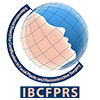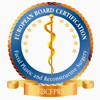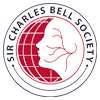What Is Synkinesis?
When facial nerves move involuntarily, contract, or relax due to various reasons, and different types of disorders occur in the function of facial nerves and muscles, this condition is called facial synkinesis. This is not a tic but a disorder affecting nerve functions. This disorder causes involuntary movements in facial muscle groups. For example, a patient may want to smile but simultaneously experience involuntary closure of their eyelid.
These abnormal facial movements significantly affect the patient's quality of life. Additionally, it can lead to social withdrawal and social phobia, prompting patients to seek treatment. While it may be considered a facial muscle spasm or partial facial paralysis, an accurate diagnosis will be made by your doctor. When an appropriate treatment method is selected, the symptoms of facial synkinesis can disappear completely. In severe cases, the symptoms may only diminish.
Why Does Synkinesis Occur?
This type of facial muscle disorder can have various causes. Therefore, when asking, "What causes synkinesis?" the cause also determines the course of the condition. The appropriate treatment method will also be selected based on the causes. The reasons leading to synkinesis include:
- Autoimmune diseases
- Trauma
- Post-surgical trauma
- Genetic factors
- Central nervous system lesions
- Temporal bone fractures
- Causes related to viral infections
- Head tumors
- Neck tumors
- Moebius Syndrome
- Ramsey Hunt Syndrome
- AIDS
- Birth trauma
Common Signs and Symptoms of Synkinesis
Most involuntary movements occurring in facial muscle groups can be identified as synkinesis symptoms. However, an accurate diagnosis will be made after a thorough examination by a doctor. Common symptoms of synkinesis include:
- Involuntary abnormalities in facial muscles
- Eye narrowing while smiling
- Facial muscle tension causing headaches
- Muscle pain in the face
- Twitching in the cheeks, jaw, or eyes
- Prominent cheek lines and enlarged cheeks
- Neck muscle tension while whistling
- Exerting three to four times more effort to move a facial muscle
- Short and tense expressions when muscles are overused
- Linked facial movements
- Cheeks lifting upward when eyes are closed
- Dimples appearing in the chin
- Inability to coordinate facial muscles properly
- Pulling of the corner of the mouth upward
- Tension in the neck band
- Abnormal facial muscle movements
- Tightness in the cheeks
- Narrowing of the affected eye
- Inability of muscles to move simultaneously
- Increased facial muscle spasms
Other differences may occur depending on the severity of the symptoms. The doctor will evaluate these symptoms along with the examination results to make the correct decision. The most accurate decision will emerge after a preliminary consultation.
How Is Synkinesis Diagnosed?
The doctor's medical expertise is an essential part of the diagnosis, as they decide on the diagnosis based on their knowledge and evaluations. Initially, the patient's medical history is reviewed, and a consultation is conducted. The more attention and care are given to the consultation, the higher the chances of treatment success. During the consultation:
- The patient's medical history is taken.
- Information about synkinesis symptoms is gathered from the patient.
- The patient is asked to perform certain facial movements.
- Facial nerves are evaluated.
Once these are assessed together, the treatment phase proceeds smoothly.
What Are the Treatment Types for Synkinesis?
Despite medical advancements, three primary treatment methods are most commonly used for synkinesis today. These methods are selected based on the severity of the patient's condition. The treatment methods for synkinesis are as follows:
- Facial synkinesis surgery: This treatment method may include aesthetic procedures like neck band corrections, corner mouth suspensions, or blepharoplasty. However, it is generally preferred for deep and severe muscle spasms, requiring the patient to have a high degree of synkinesis.
- Botox: Botox can be a standalone treatment or used in conjunction with other therapies. By reducing muscle activity, muscle spasms become less noticeable. Thus, Botox can hide noticeable muscle disorders without affecting the movement of other muscles.
- Physical therapy: This method reshapes or trains the facial muscles. Depending on the severity of the contracted facial muscle, various techniques are used to reshape the muscles. The doctor prepares treatment plans tailored to the patient's problems, focusing on abnormally moving muscles and applying appropriate planning.
These methods can be used together, separately, or in stages. Your doctor will decide on the best course of action after an examination.
Things You Should Pay Attention to Before Synkinesis Surgery
There are many things to consider before synkinesis surgery. These factors help ensure the procedure progresses flawlessly. Points to consider include:
- If general anesthesia is required, the patient must stop eating and drinking as instructed by the doctor.
- Male patients should have a clean shave of their beard and mustache before surgery.
- Blood-thinning medications should be discontinued a week before surgery.
- Avoid activities or exercises that stress facial and neck muscles.
- Herbal tea consumption should be stopped approximately one week before surgery.
- Limit caffeine intake before surgery.
- Avoid alcohol and smoking for a while.
Things You Should Pay Attention to After Synkinesis Surgery
Just as there are things to consider before synkinesis treatment, there are also important factors to keep in mind after surgery to accelerate recovery:
- Apply cold compresses to areas prone to swelling and edema.
- Keep stitches clean and perform regular dressing changes.
- Maintain a healthy diet.
- Avoid alcohol and smoking.
- Do not use blood-thinning medications for about a week.
- Follow the recommended time to avoid hot showers based on the type of surgery.
- Sleep with your head slightly elevated.
- Avoid exercises that strain facial muscles and nerves.
- Refrain from heavy and strenuous activities for a while.
- Stay away from environments that could lead to infection.
What Will Happen if Synkinesis Goes Untreated?
If facial synkinesis is left untreated, symptoms may worsen. Deformation in facial muscles and nerves may become more frequent. Early intervention ensures better results, making it essential to treat synkinesis promptly to prevent symptoms from becoming permanent.
What Does Facial Synkinesis Look Like?
The appearance of synkinesis varies based on the patient’s condition. In severe cases, symptoms are clearly noticeable, such as eye twitching, neck muscle tension, facial twitching, or drooping at the corner of the mouth. The frequency and appearance of symptoms depend on the extent of damage to the patient’s muscles or nerves.
Synkinesis FAQs
Are synkinesis and facial paralysis the same thing?
While facial synkinesis and facial paralysis share some symptoms, they differ significantly. Facial synkinesis involves linked facial movements and coordination issues in facial muscles, which are often closely related to facial paralysis symptoms.
Can facial therapy alone reverse synkinesis?
Depending on the patient’s condition, physical therapy may be sufficient on its own. However, in some cases, surgical methods are required to address nerve or muscle issues. Treatments like Botox or surgery often yield good results, especially when initiated within three days of synkinesis onset.














